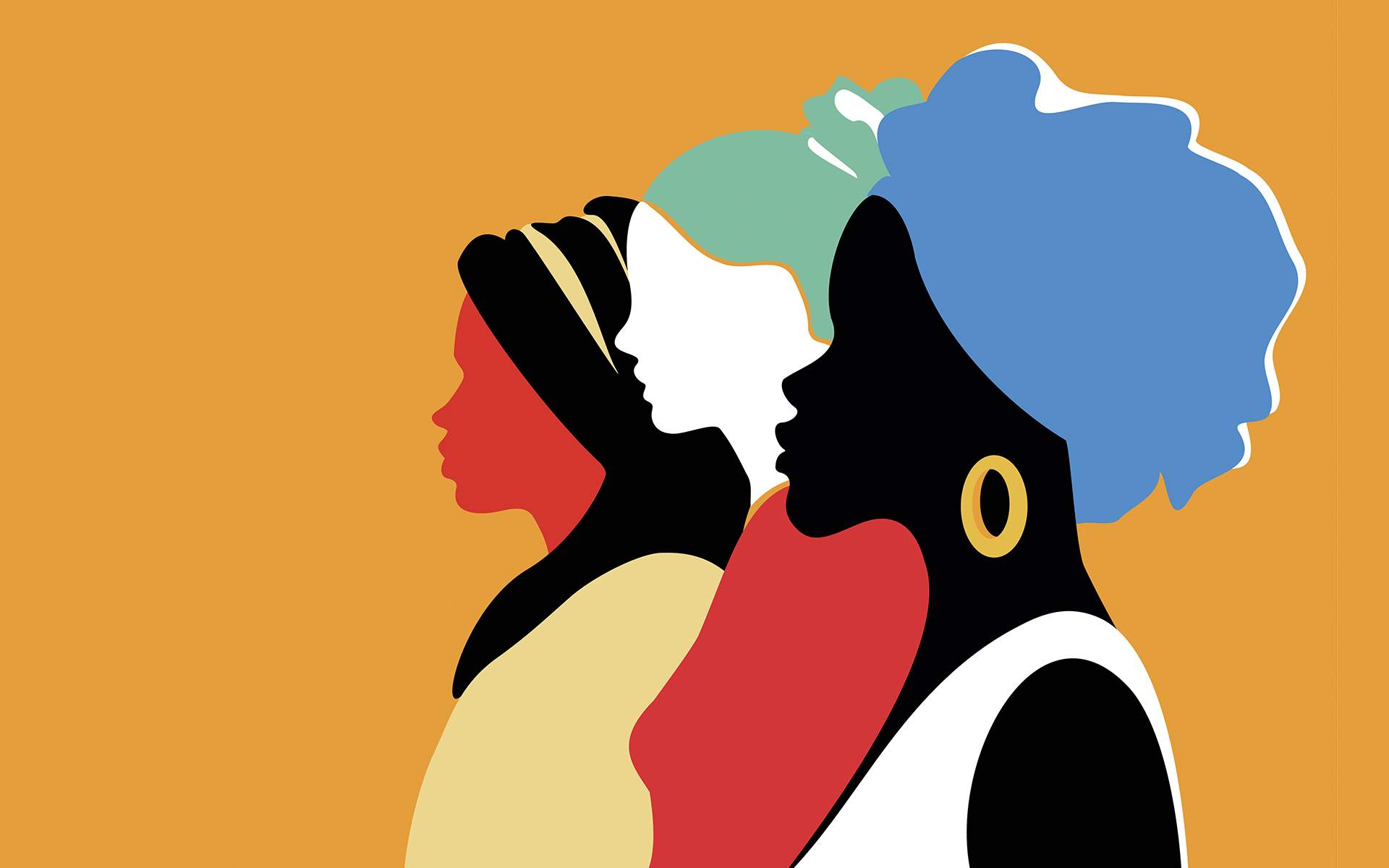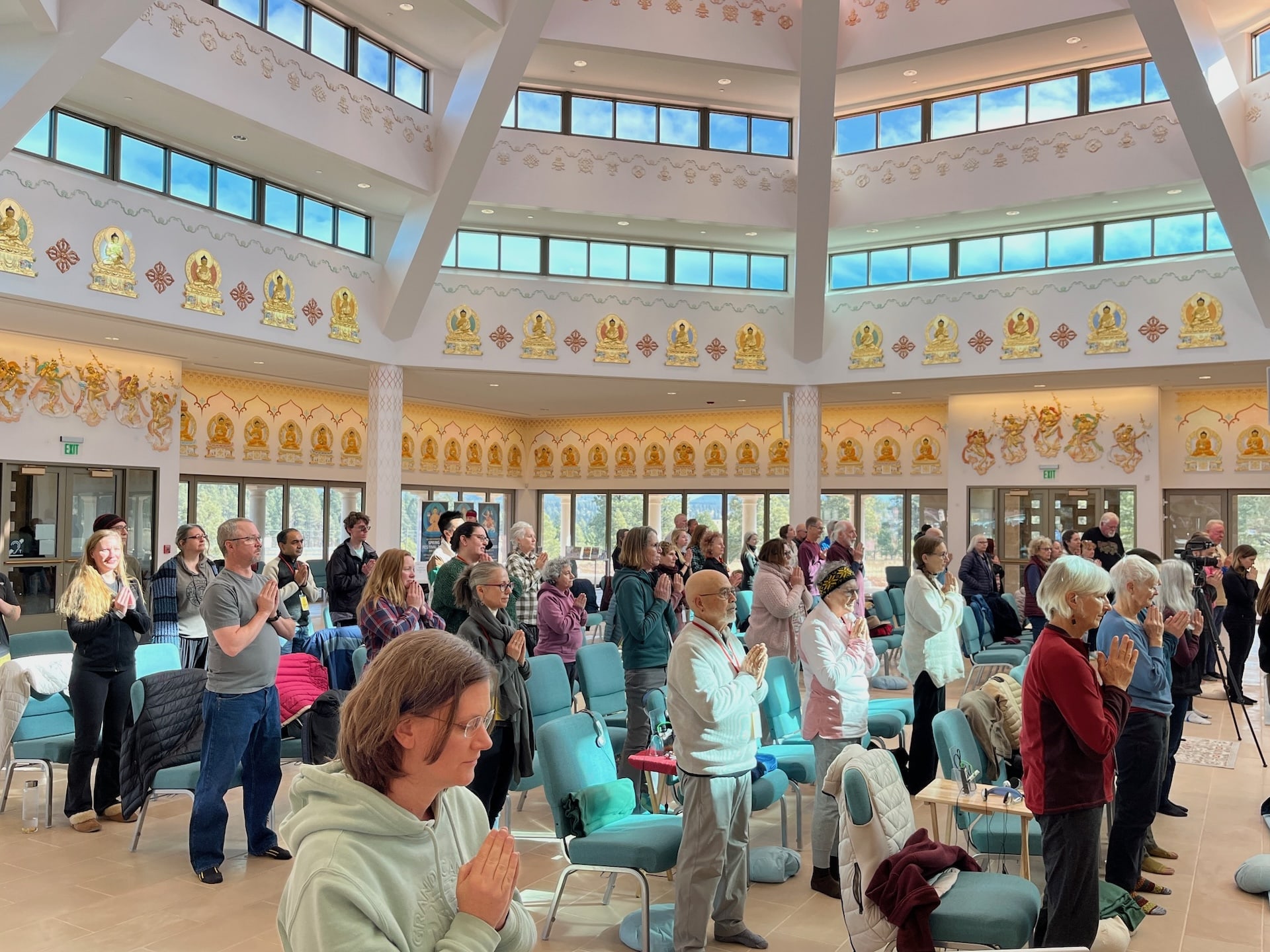Buddhist Women Gather to Discuss Ordination, Social Justice, and Solidarity
The 19th Sakyadhita Conference brought together 400 participants in Kuching, Malaysia, to address issues facing Buddhist women. The post Buddhist Women Gather to Discuss Ordination, Social Justice, and Solidarity appeared first on Tricycle: The Buddhist Review.
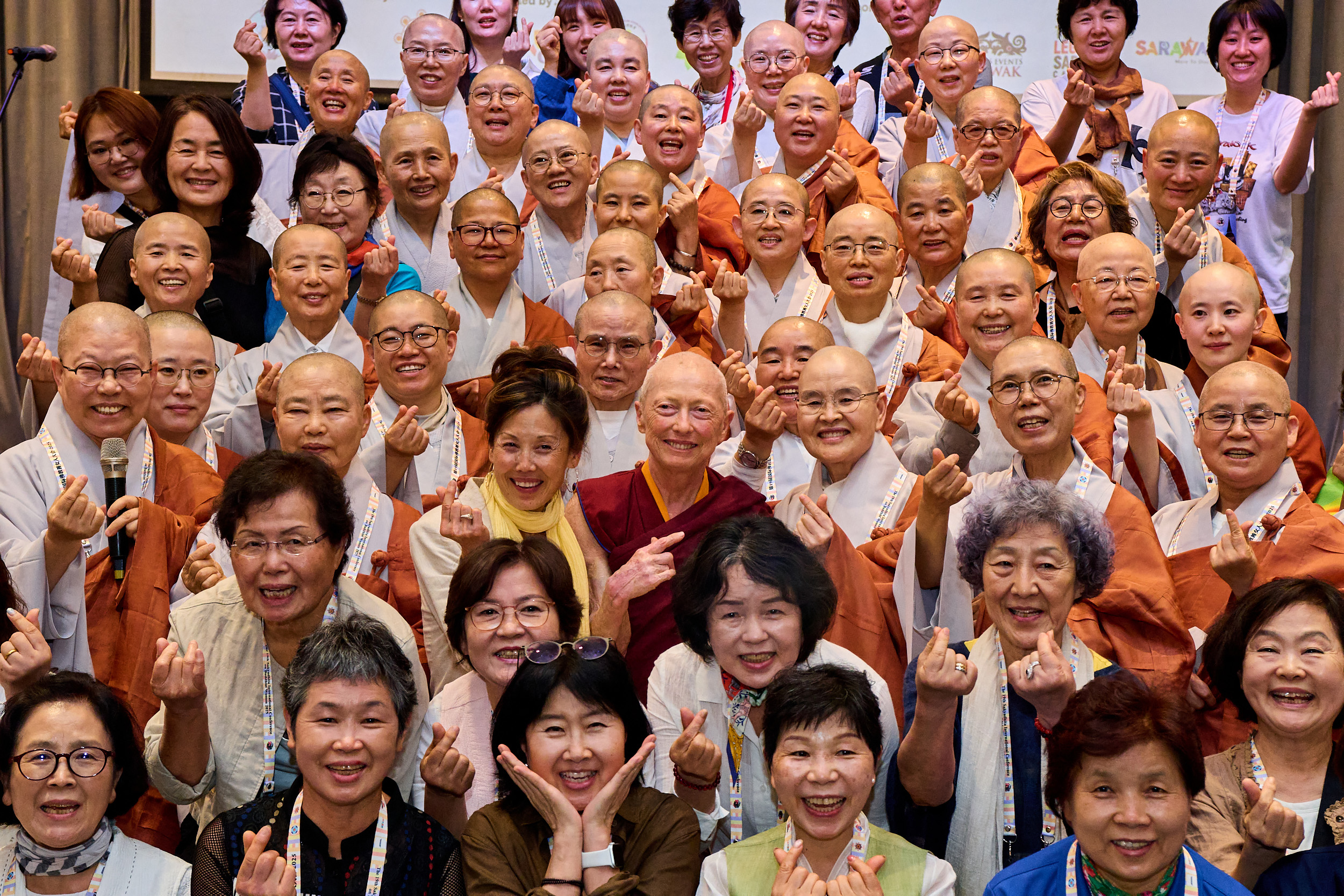
The 19th Sakyadhita Conference, “Navigating Change: Buddhist Women in Transition,” took place June 16–23 in the strikingly multicultural, multireligious city of Kuching, Sarawak, East Malaysia. Close to 400 participants—Buddhist monastics at all levels of ordination, Buddhist laywomen, scholars, mental health professionals, and social justice advocates—journeyed, sometimes for days, from twenty-five countries to attend the conference. Almost 200 local volunteers from the Kuching Buddhist Society worked tirelessly to register, house, mic, project, translate, photograph, transport, entertain, host, feed, and otherwise care for participants.
The conference featured five days of academic-style presentations, interactive workshops, chanting, meditation, dharma talks, cultural shows, and choreographed opening and closing ceremonies. This formal conference program was followed, as is customary at Sakyadhita conferences, by three days of bus touring featuring a wonderful visit to a nearby orangutan preserve, an educational visit to an indigenous longhouse, and a wander through the spectacular Kuching Buddhist Village.
Organizers are intentional in scheduling Sakyadhita conferences over a full week and building in multiple communal meals and regularly scheduled tea breaks, as well as a bus tour, according to Sharon Suh, current president of Sakyadhita International. “Interesting and fun things happen on the bus and around the meals,” she said. “You are not just sitting and listening to a panel or participating in a workshop. You are sitting together and laughing together, and over the course of time you establish relationships.”
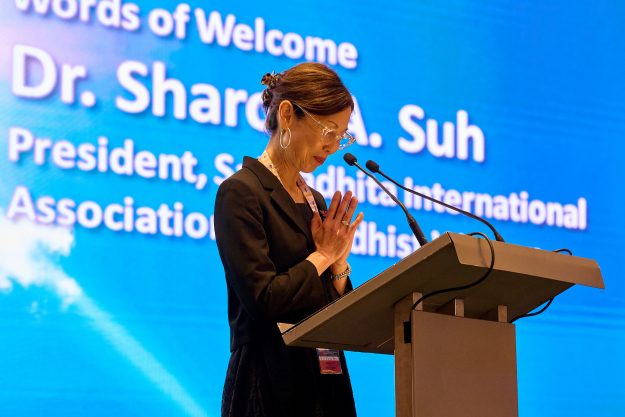 Sharon Suh at the 19th Sakyadhita Conference. Image by Olivier Adam.
Sharon Suh at the 19th Sakyadhita Conference. Image by Olivier Adam.Choela Karma Tashi Choedron, a Vajrayana nun from Malaysia who has attended Sakyadhita conferences regularly since she was first invited to present at a conference in Vietnam in 2010, agrees that relationship-building is central to the Sakyadhita experience. “We have the same issues, but there is no platform to speak and thrash out our ideas, brainstorm, and just tell our feelings. We want to tell somebody what we feel about the issues. This is two-way communication. We start a network, and then we can bring things forward. That is the purpose of Sakyadhita.”
The institutional status and challenges faced by Buddhist monastic women have been at the heart of the Sakyadhita organization since its beginning in 1987 in Bodhgaya, India. Founders Ayya Khema, Bhikkhuni Dhammananda, and Karma Lekshe Tsomo organized it, and it was the first International Conference on Buddhist Women. These concerns continue to animate the gathering. Many of its speakers are monastic women from all over the Buddhist world reporting on the educational and leadership work they are doing within their communities.
The first panel presenter at the Kuching gathering was Bhikkhuni Kundasale Subhagya from Sri Lanka, who reported on the thirty years of forward progress by the Sri Lankan bhikkhuni sangha. The support and networking made possible by the Sakyadhita organization were central to the reestablishment of full bhikkhuni ordination for women in Sri Lanka in the ’90s. Sri Lanka is now an important destination for women in Theravada lineages seeking full bhikkhuni ordination.
While reporting on steadily increasing educational and leadership opportunities for ordained Buddhist women in Sri Lanka, Bhikkhuni Kundasale Subhagya also expressed frustration that the bhikkhuni sangha still struggles with issues related to social status, human rights, and legal rights. A particular concern she raised in her presentation was the withholding by the Sri Lankan government and the Department of Buddhist Affairs of national identity cards that correctly identify bhikkhunis. In a highly auspicious series of events, however, news broke later that same day of a landmark decision by the Supreme Court of Sri Lanka ordering that Welimada Dhammadinna Bhikkhuni should receive an official national identity card recognizing her status as a fully ordained monastic.
Although issues regarding the status of Buddhist monastic women continue to be discussed at Sakyadhita, it is also a place where presenters and participants wrestle with issues of social justice, trauma, safety, wellness, and mental health that especially impact women. For instance, this year’s program included a roundtable panel presentation, a workshop, and a focus group discussion devoted to the issue of sexual violence in Buddhism. A number of interviewees singled out the sexual violence presentations as new, shocking information. Sramaneri Ariya Dhammajivi, a recently ordained California-based Cambodian American who has long worked to support Buddhist women in Cambodia, shared, “What I am not surprised by is that every tradition experiences a lack of support, a lack of education. What I was surprised by this Sakyadhita is learning about sexual abuse. I felt heartbroken by that.”
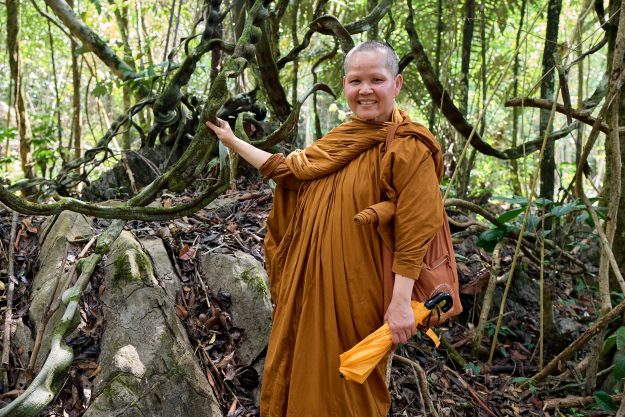 Sramaneri Ariya Dhammajivi. Image by Sramaneri Ariya Dhammajivi.
Sramaneri Ariya Dhammajivi. Image by Sramaneri Ariya Dhammajivi.Thich Nu Lien Anh, a Vietnamese nun who has just completed a master’s degree in clinical mental health counseling at Naropa University, presented on “Healing at the Crossroads: Integrating Buddhist Teachings, Mental Health counseling, and Societal Oppression in Working with Domestic Violence Survivors” together with her Naropa colleague Shannon Chang, also a clinical mental health counselor. Lien Anh pointed to potential tensions between sangha concerns and social justice concerns at Sakyadhita, while also acknowledging its power as a community space to hold diverse viewpoints simultaneously.
“What I take away is that sexual abuse in monastic environments is really painful and concerning,” Lien Anh said. “Many people have put attention and effort into helping the survivors. I’m worried that, with all of these wounds and abuse, people are gradually losing their faith and will to practice and trust in the pure sangha. The monastics are more concerned with how to care and improve and get support for monastic environments. And lay practitioners care more about social issues. If we had more monastics caring for social issues, we could bridge [the gap] between [these two concerns].” President Sharon Suh also emphasized the need to include, acknowledge, and welcome all perspectives: lay and monastic, Asian and Western, dharmic and academic, individual healing and institution building, at Sakyadhita.
Age is another prominent dimension of Sakyadhita’s diversity. The Kuching gathering was fully inclusive and intergenerational, bringing young rising Buddhist leaders into conversation with venerable Buddhist elders such as Jetsunma Tenzin Palmo. “Sakyadhita validates the experiences that diverse Buddhist women have had. Just to be acknowledged, whether a layperson, an academic, a nun who is fully ordained, a novice, or not ordained, just recognizing the incredible diversity of Buddhist women is so important. And what brings them together is that they haven’t been acknowledged or seen for the most part,” said Suh.
 Jetsunma Tenzin Palmo and Karma Lekshe Tsomo at the 19th Sakyadhita Conference. Image by Olivier Adam.
Jetsunma Tenzin Palmo and Karma Lekshe Tsomo at the 19th Sakyadhita Conference. Image by Olivier Adam.Unity within diversity was a theme that many Sakyadhita participants noted as central to their experience of the conference. Vandana Bhikkhuni, a dynamic young nun from the Ambedkarite community in India who experienced Sakyadhita for the first time in Kuching, commented on a felt sense of connection, purpose, and shared aspiration. Energized, she aspires to organize a Sakyadhita gathering in India, possibly at Bodhgaya, commenting that in India, “We don’t have harmony. Everyone wants to lead in their own areas, but there is a lack of understanding, there is a lack of support, there is a lack of knowledge. I want them to connect with each other and learn [from] each other’s difficulties. Each area has its own challenges. We can come together from all of the states and create some unity.”
Unity is a vibe at Sakyadhita, communicated through laughter, generosity, and deep listening. It also manifests pragmatically as financial, institutional, and ritual support across international women’s sanghas. Jinmyeong is a senior nun in the Korean sangha, holding several institutional roles, including serving on the Prosecutor’s Office Human Rights Commision and heading Beopryeonsa Temple in Siheung. Jinmyeong was heavily involved in organizing the 2023 Sakyadhita in Seoul, South Korea, which was attended by a record 2,800 people. According to Jinmyeong, the scale of the Seoul gathering drew the attention of the Korean bhikkhu sangha, who were not necessarily aware of Korean nuns’ hard work and success in many fields. “There was even a rumor that the bhikkhus were shocked,” she noted.
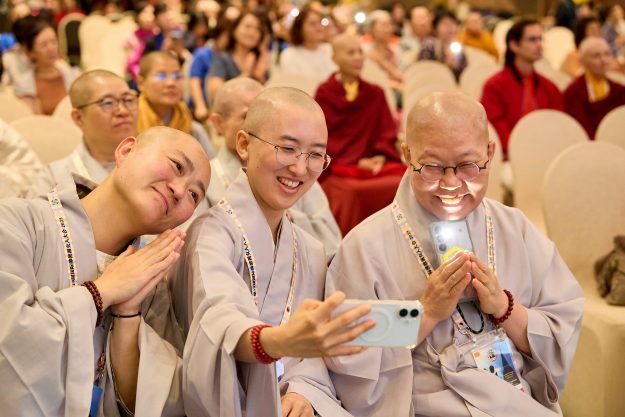 Jinmyeong (right) with fellow nuns at the 19th Sakyadhita Conference. Image by Olivier Adam.
Jinmyeong (right) with fellow nuns at the 19th Sakyadhita Conference. Image by Olivier Adam.An important presentation by Emma Slade, also known as Choela Pema Deki, at the Seoul Sakyadhita gathering informed attendees of the historic June 2022 ordination of 144 Vajrayana nuns in Bhutan. Buddhist circles in Korea provided 30 million won (about 25,000 USD) to support the Bhutanese nuns. Jinmyeong plans to travel to Bhutan this November in support of a second ordination ceremony that is being planned. “We have decided to go and celebrate together. I think it will be meaningful for both sides.” She adds, “I hope that Korean nuns can also become supporters of nuns in other countries. I don’t just wish for the development of Korean nuns, but also for the growth of nuns around the world. That, I believe, is one of the core meanings of the Sakyadhita Conference.”
 Pamela Ayo Yetunde at the 19th Sakyadhita Conference. Image by Olivier Adam.
Pamela Ayo Yetunde at the 19th Sakyadhita Conference. Image by Olivier Adam.Pamela Ayo Yetunde is a Chicago-based community dharma leader, Zen student, chaplain, pastoral counselor, and scholar of pastoral theology, who delivered the keynote at this year’s opening ceremony. Kuching is her second Sakyadhita experience, the first being Seoul. Like Jinmyeong, she also noted Sakyadhita’s importance as a place of collaboration and connection at all levels. “The people who speak and are presenting here are people who have addressed an issue. They share their strategy. They talk about the consequences of doing the work. I think that is what cultivates hope and skillfulness—‘Oh yeah, I can do this’—and resources. One thing I am hearing more at this conference is ‘We need international intervention. We need advocates from this country to write a letter to this country. We need witnesses on the ground to be there when this happens.’ That matters.”
The 20th Sakyadhita conference will take place in 2027 in Borobudur, Indonesia.
Readers wishing to learn more about the United States chapter of Sakyadhita are invited to contact the author at langenap@eckerd.edu

 UsenB
UsenB 








